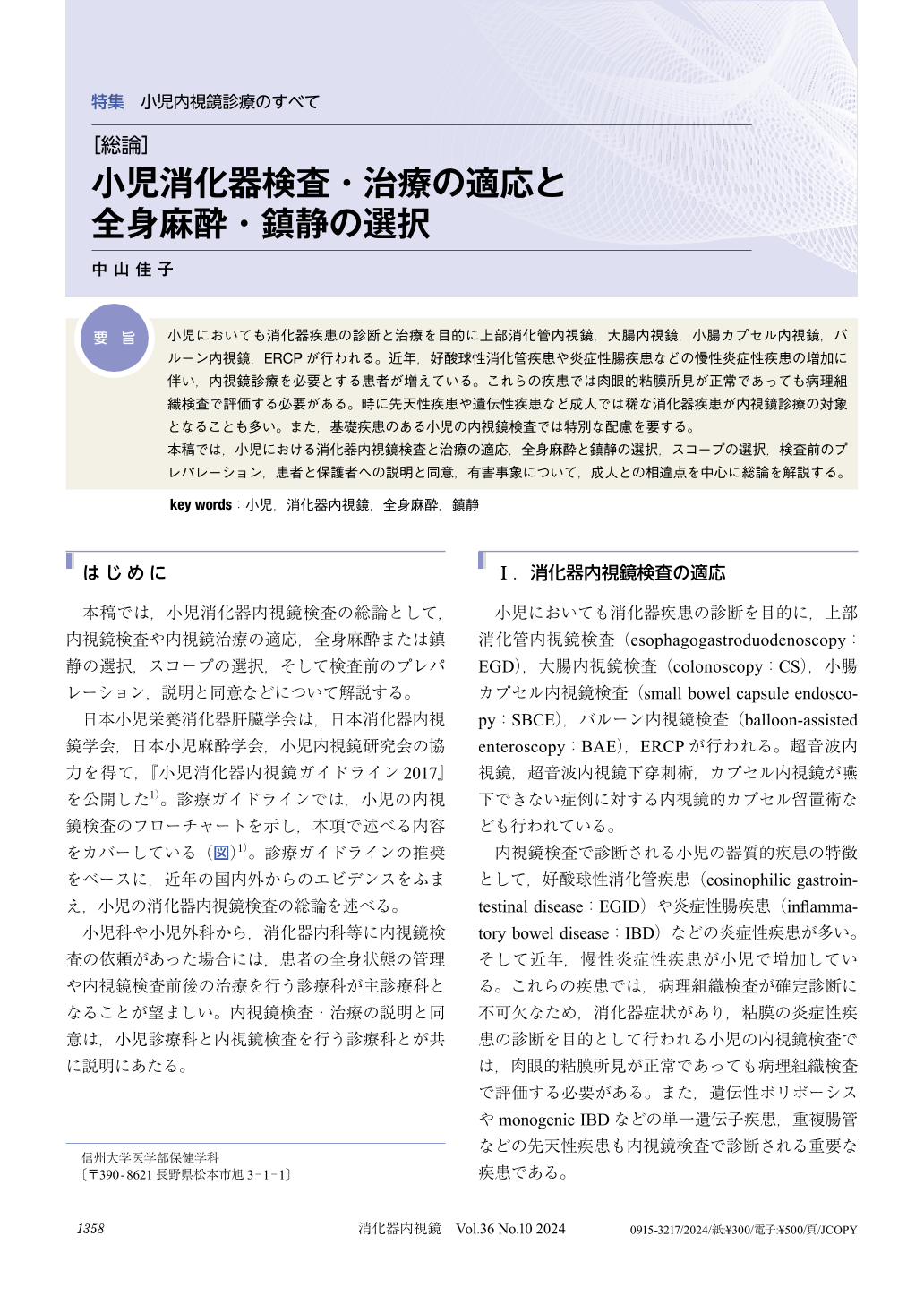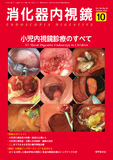Japanese
English
- 有料閲覧
- Abstract 文献概要
- 1ページ目 Look Inside
- 参考文献 Reference
要旨
小児においても消化器疾患の診断と治療を目的に上部消化管内視鏡,大腸内視鏡,小腸カプセル内視鏡,バルーン内視鏡,ERCPが行われる。近年,好酸球性消化管疾患や炎症性腸疾患などの慢性炎症性疾患の増加に伴い,内視鏡診療を必要とする患者が増えている。これらの疾患では肉眼的粘膜所見が正常であっても病理組織検査で評価する必要がある。時に先天性疾患や遺伝性疾患など成人では稀な消化器疾患が内視鏡診療の対象となることも多い。また,基礎疾患のある小児の内視鏡検査では特別な配慮を要する。
本稿では,小児における消化器内視鏡検査と治療の適応,全身麻酔と鎮静の選択,スコープの選択,検査前のプレパレーション,患者と保護者への説明と同意,有害事象について,成人との相違点を中心に総論を解説する。
In children, esophagogastroduodenoscopy, colonoscopy, small bowel capsule endoscopy, balloon endoscopy, and endoscopic retrograde cholangiopancreatography are performed to diagnose and treat gastrointestinal disorders. Recently, with the increase in chronic inflammatory diseases such as eosinophilic gastrointestinal disease and inflammatory bowel disease, more children require endoscopy. In these diseases, histopathologic examination should be performed even if the mucosal findings are normal. Congenital or genetic diseases that are relatively rare in adults are often the subject of endoscopy in children. Special care is needed when performing endoscopy in children with underlying diseases. This article provides a general overview of the indications for endoscopy in children, selection of general anesthesia or sedation, choice of scope, pre-examination preparation, patient and parental informed consent, and adverse events, as compared to those in adults.

© tokyo-igakusha.co.jp. All right reserved.


